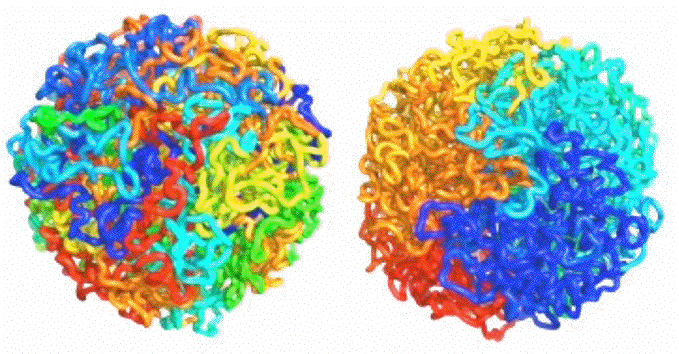
 |
| Left: a tangled equilibrium globule. Right: a fractal globule. Similar colors represent nearby regions in the DNA strand. Simulations by Leonid Mirny and Maxim Imakaev. |
| Unwound into a linear strand, our DNA would stretch to nearly two meters. |
| The difficult task of folding this DNA into the cell nucleus, which has a diameter of about 5 millionths of a meter, is accomplished by histones, protein components of chromatin. |
| The equilibrium globule (left) folds DNA but introduces tangles and knots, making it difficult for DNA to unfold and refold during replication, and gene activation and repression. |
| Alexander Grosberg's fractal globule (right) folds the DNA recursively, the same folding pattern repeated over many levels. This folds without knots, avoiding the problems of the equilibrium globule. |
| Recent experiments support the fractal globule hypothesis. |
Return to extra examples.